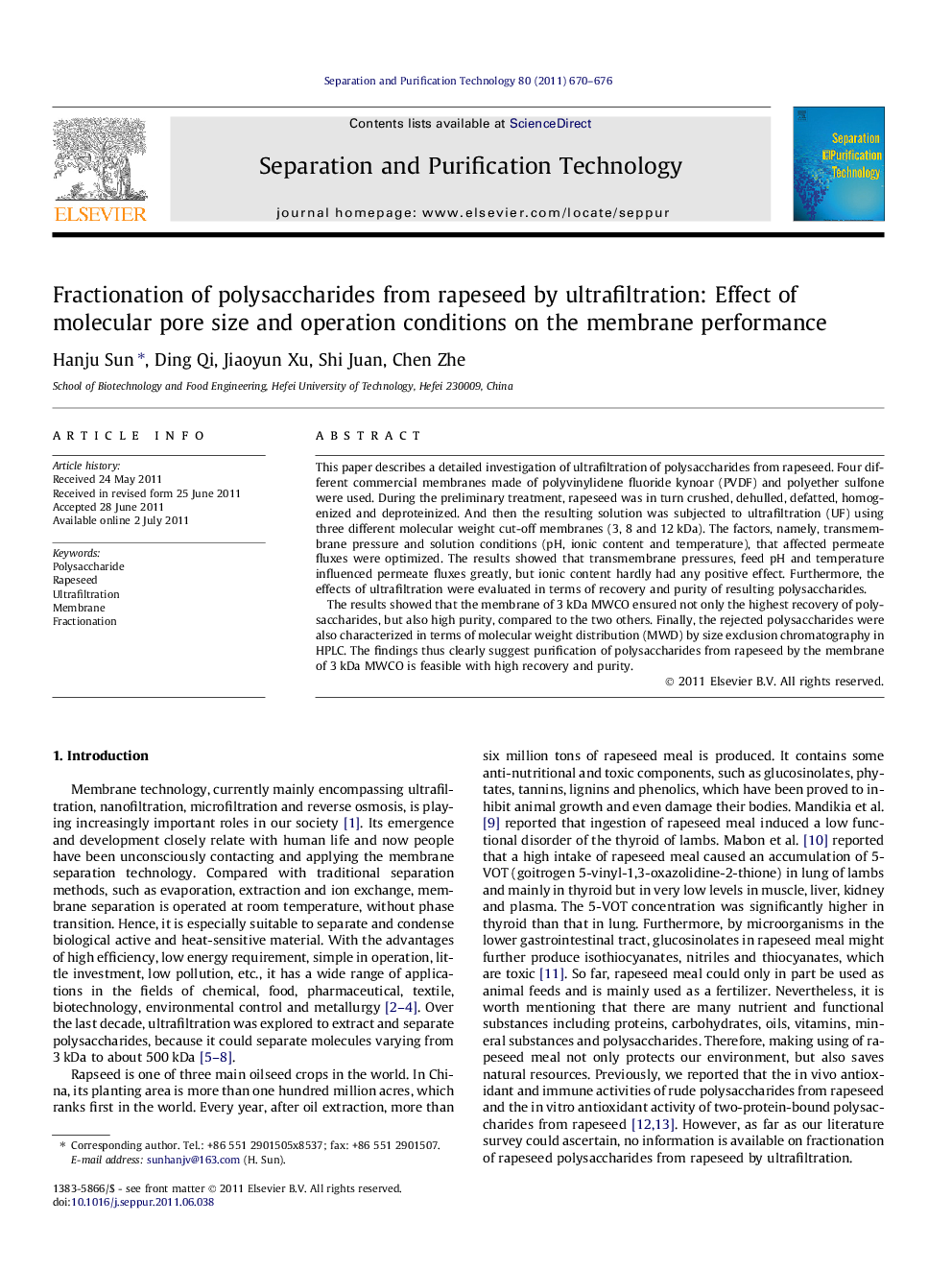| Article ID | Journal | Published Year | Pages | File Type |
|---|---|---|---|---|
| 642508 | Separation and Purification Technology | 2011 | 7 Pages |
This paper describes a detailed investigation of ultrafiltration of polysaccharides from rapeseed. Four different commercial membranes made of polyvinylidene fluoride kynoar (PVDF) and polyether sulfone were used. During the preliminary treatment, rapeseed was in turn crushed, dehulled, defatted, homogenized and deproteinized. And then the resulting solution was subjected to ultrafiltration (UF) using three different molecular weight cut-off membranes (3, 8 and 12 kDa). The factors, namely, transmembrane pressure and solution conditions (pH, ionic content and temperature), that affected permeate fluxes were optimized. The results showed that transmembrane pressures, feed pH and temperature influenced permeate fluxes greatly, but ionic content hardly had any positive effect. Furthermore, the effects of ultrafiltration were evaluated in terms of recovery and purity of resulting polysaccharides.The results showed that the membrane of 3 kDa MWCO ensured not only the highest recovery of polysaccharides, but also high purity, compared to the two others. Finally, the rejected polysaccharides were also characterized in terms of molecular weight distribution (MWD) by size exclusion chromatography in HPLC. The findings thus clearly suggest purification of polysaccharides from rapeseed by the membrane of 3 kDa MWCO is feasible with high recovery and purity.
Graphical abstractAfter rapeseed was in turn crushed with a mechanical crusher, dehulled with an electric fan, defatted with petroleum ether and mixed with water, the resulting solution was further coarsely grinded with a paste mill and finely grinded with a colloid mill in turn. After set at 50 °C for 5 h, the solution was centrifugalized to discard the residue. The resulting solution was filtered through a membrane of 500 kDa MWCO to get rid of most of proteins and the permeate was subjected to ultrafiltration (UF) to further remove monosaccharides, oligosaccharides, pigments, mineral substances and toxic components using three different molecular weight cut-off membranes (3, 8 and 12 kDa). The findings clearly suggest that fractionation of polysaccharides from rapeseed by the membrane of 3 kDa MWCO is feasible with high recovery and purity.Figure optionsDownload full-size imageDownload as PowerPoint slideHighlights► Polysaccharides were characterized in terms of molecular weight distribution. ► Transmembrane pressure, feed pH and temperature influenced permeate flux greatly. ► Feed ionic content, could hardly have any positive effects on permeate flux. ► Purification of rapeseed polysaccharides by membrane of 3 kDa MWCO is feasible.
